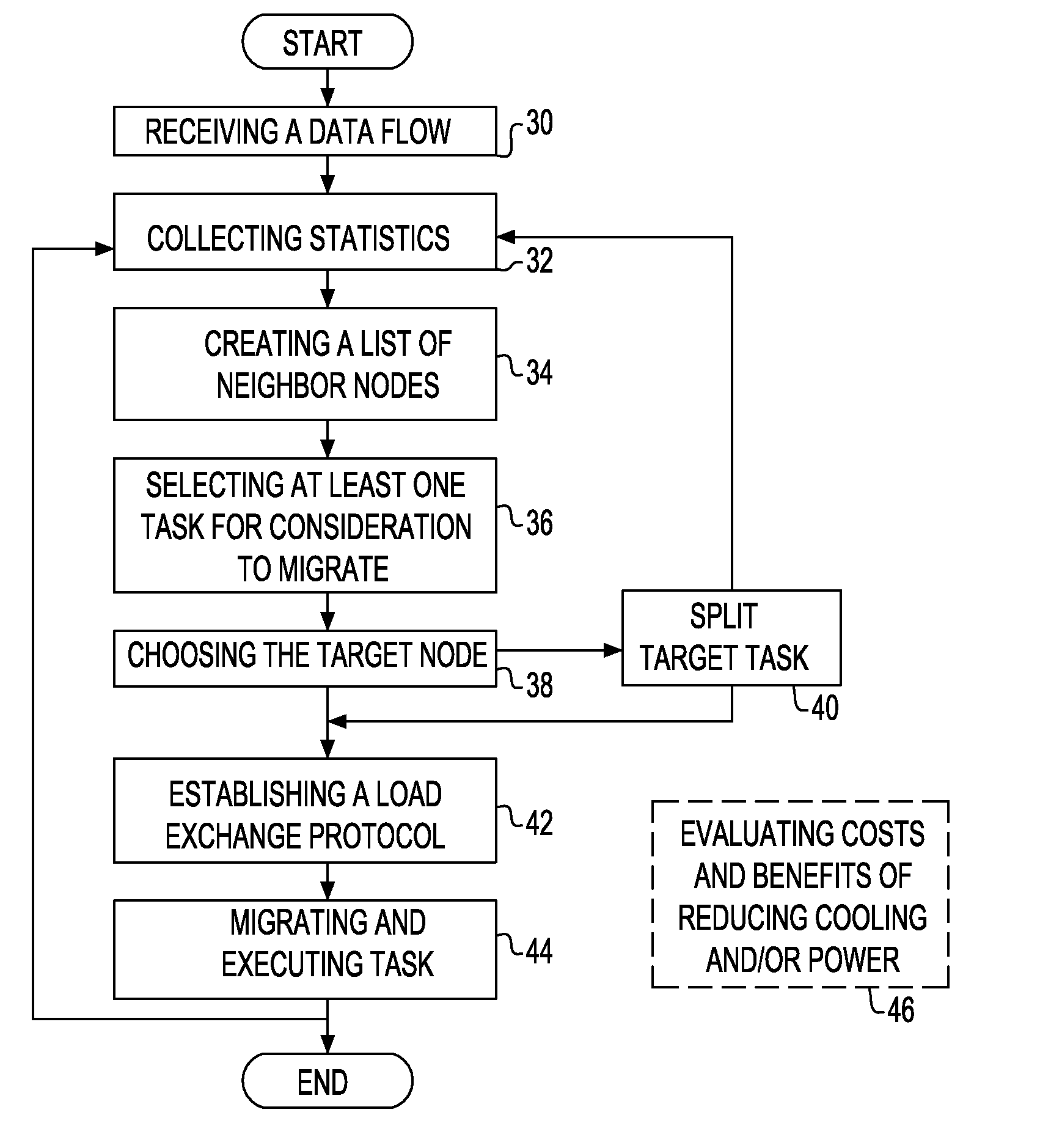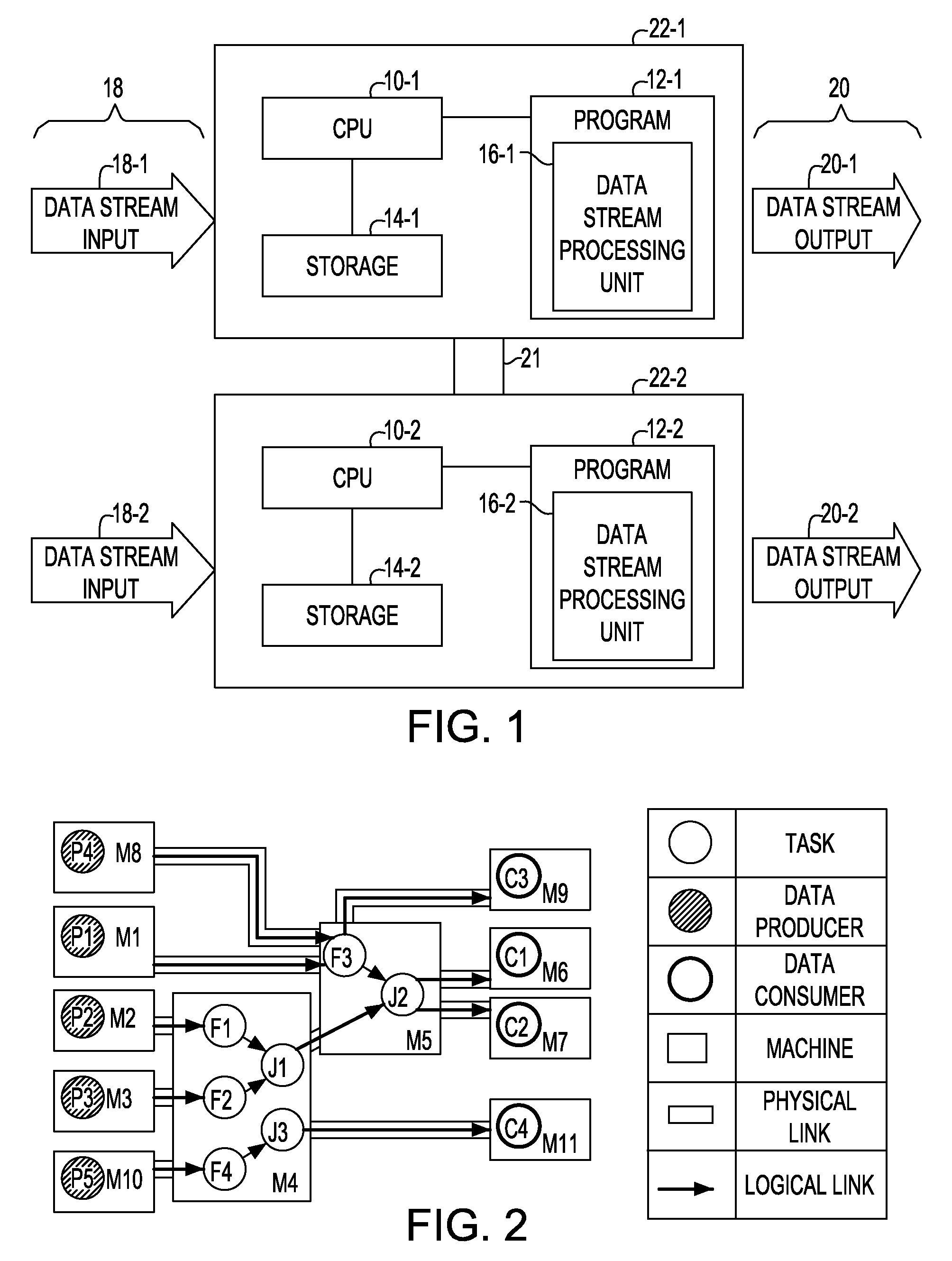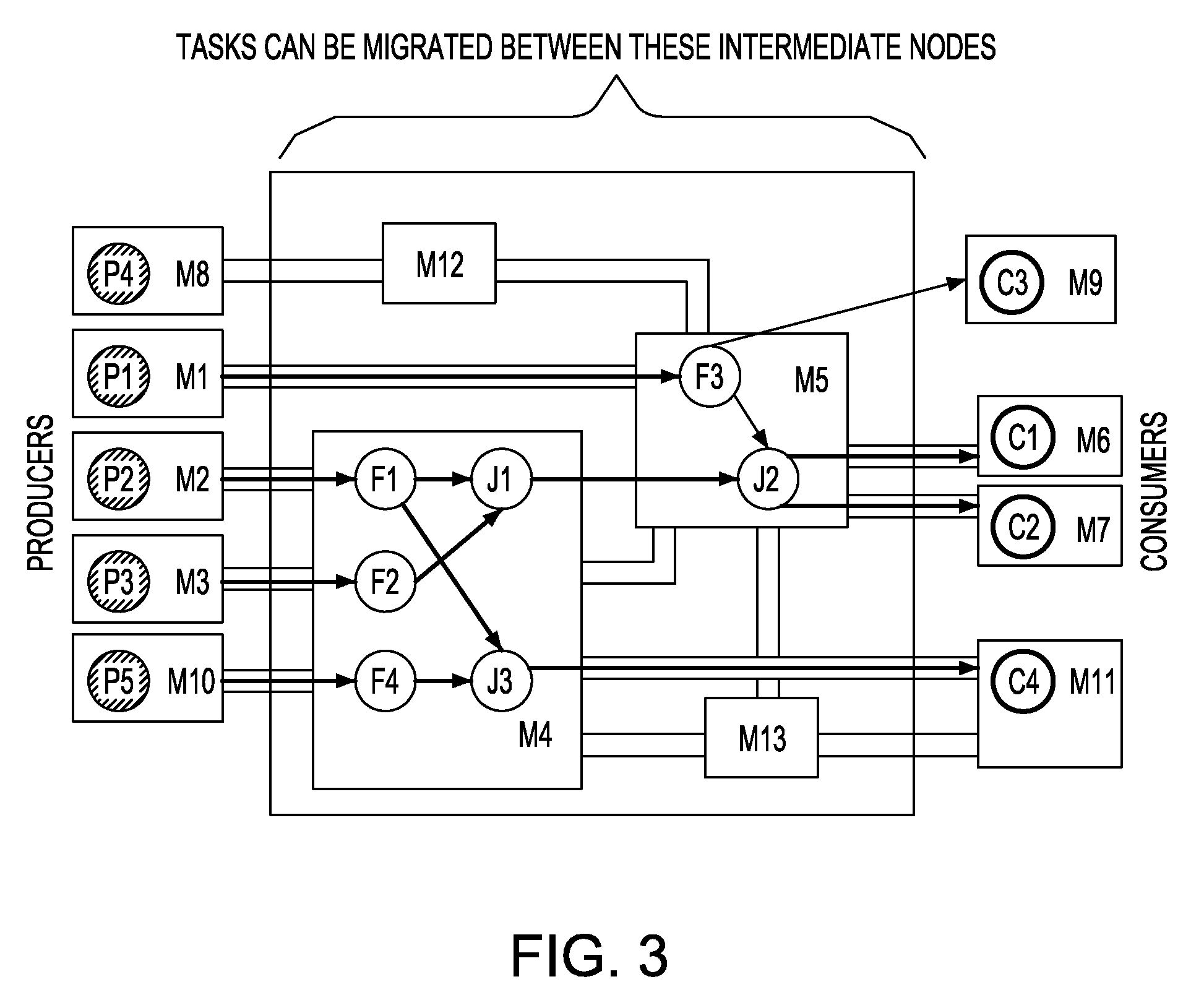Decentralized load distribution to reduce power and/or cooling costs in an event-driven system
a load distribution and event-driven technology, applied in the field of data stream processing, can solve the problems and achieve the effect of low power cost and cooling cos
- Summary
- Abstract
- Description
- Claims
- Application Information
AI Technical Summary
Benefits of technology
Problems solved by technology
Method used
Image
Examples
Embodiment Construction
[0021]The program environment in which a present embodiment of the invention is executed illustratively incorporates multiple connected general-purpose computers or special purpose devices such as a hand-held computer. FIG. 1 is a block diagram that illustrates one exemplary hardware environment of the present invention in which there are two computer systems 22-1, 22-2. It should be understood however that there may be and usually more than two computer systems contemplated in practicing the present invention. A computer system may also be called a machine or node hereafter. The present invention is typically implemented using computer system 22-1, 22-2 comprising Central Processing Unit (CPU) 10-1, 10-2 comprised of microprocessor means, random access memory (RAM), read-only memory (ROM) and other components. The computer may be a personal computer, mainframe computer or other computing device. Resident in the CPU 10-1, 10-2, or peripheral to it, will be a storage device 14-1, 14-...
PUM
 Login to View More
Login to View More Abstract
Description
Claims
Application Information
 Login to View More
Login to View More - R&D
- Intellectual Property
- Life Sciences
- Materials
- Tech Scout
- Unparalleled Data Quality
- Higher Quality Content
- 60% Fewer Hallucinations
Browse by: Latest US Patents, China's latest patents, Technical Efficacy Thesaurus, Application Domain, Technology Topic, Popular Technical Reports.
© 2025 PatSnap. All rights reserved.Legal|Privacy policy|Modern Slavery Act Transparency Statement|Sitemap|About US| Contact US: help@patsnap.com



